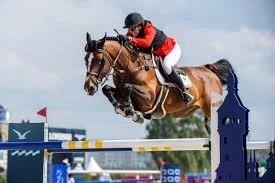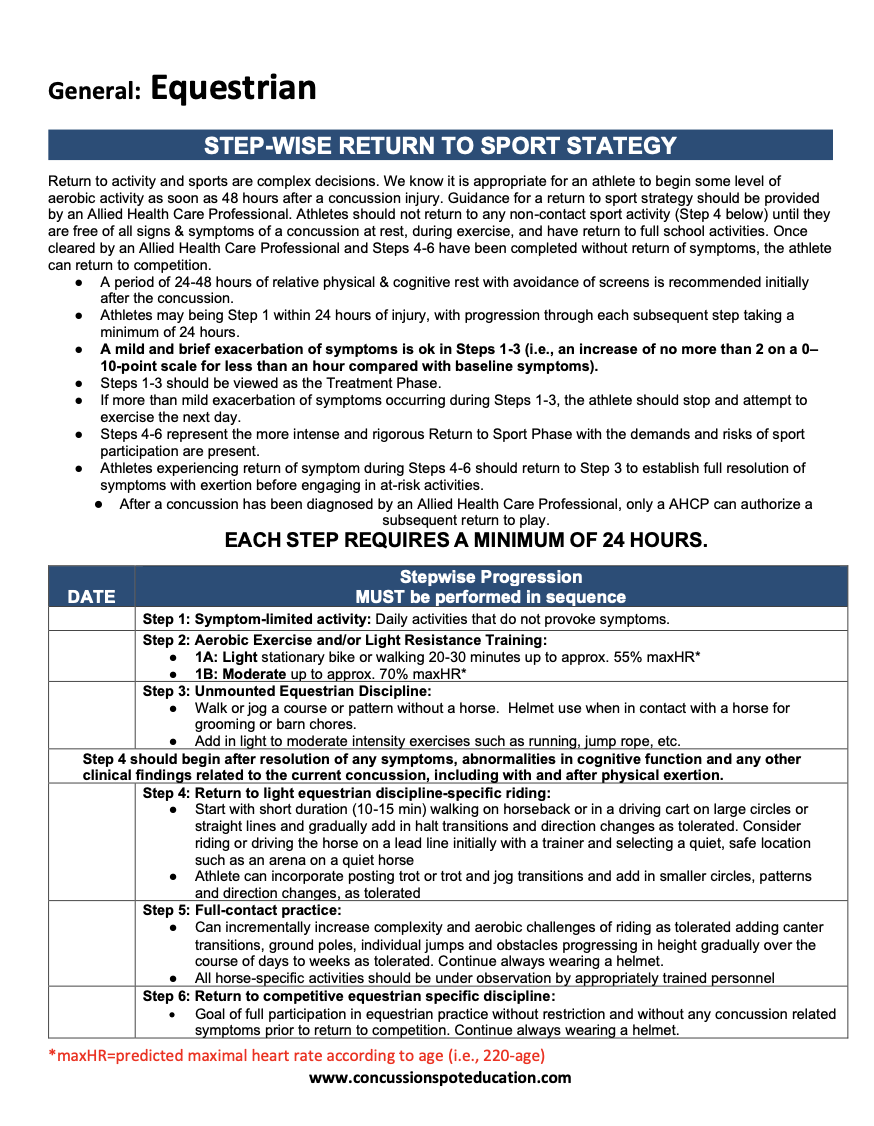

Equestrian Concussion Return to Sport Protocol
The Equestrian Concussion Return-to-Sport (RTS) Protocol is a specialized recovery plan tailored to help riders safely return to horseback riding after a concussion. Equestrian sports combine physical balance, coordination, quick reflexes, and strong communication with the horse—all on a moving animal—which creates unique challenges for concussion recovery. This protocol is designed to address these demands by guiding riders through a gradual, structured progression that prioritizes brain healing and rider safety.
Starting with symptom-limited activity and rest, the protocol gradually introduces light aerobic exercises to improve overall fitness without risking head impact. As symptoms resolve, riders move on to dryland balance and coordination drills that mimic horseback movements but without a horse. The next phases involve gentle riding sessions focusing on basic control and posture at walk and trot before advancing to more complex tasks such as cantering, jumping, and trail riding.
Each stage requires the rider to remain symptom-free for at least 24 hours before progressing. If symptoms return, the rider steps back to the previous phase for additional rest and reassessment. This stepwise approach ensures that cognitive function, reaction time, and physical coordination are fully restored before resuming full riding activities.
Designed for athletes, coaches, trainers, and healthcare providers, the Equestrian Concussion RTS Protocol helps riders safely rebuild confidence and performance while minimizing the risk of reinjury. By tailoring concussion recovery to the specific physical and mental demands of equestrian sports, this protocol supports long-term brain health and a successful return to the saddle.
The Equestrian Concussion Return-to-Sport (RTS) Protocol is a specialized recovery plan tailored to help riders safely return to horseback riding after a concussion. Equestrian sports combine physical balance, coordination, quick reflexes, and strong communication with the horse—all on a moving animal—which creates unique challenges for concussion recovery. This protocol is designed to address these demands by guiding riders through a gradual, structured progression that prioritizes brain healing and rider safety.
Starting with symptom-limited activity and rest, the protocol gradually introduces light aerobic exercises to improve overall fitness without risking head impact. As symptoms resolve, riders move on to dryland balance and coordination drills that mimic horseback movements but without a horse. The next phases involve gentle riding sessions focusing on basic control and posture at walk and trot before advancing to more complex tasks such as cantering, jumping, and trail riding.
Each stage requires the rider to remain symptom-free for at least 24 hours before progressing. If symptoms return, the rider steps back to the previous phase for additional rest and reassessment. This stepwise approach ensures that cognitive function, reaction time, and physical coordination are fully restored before resuming full riding activities.
Designed for athletes, coaches, trainers, and healthcare providers, the Equestrian Concussion RTS Protocol helps riders safely rebuild confidence and performance while minimizing the risk of reinjury. By tailoring concussion recovery to the specific physical and mental demands of equestrian sports, this protocol supports long-term brain health and a successful return to the saddle.
